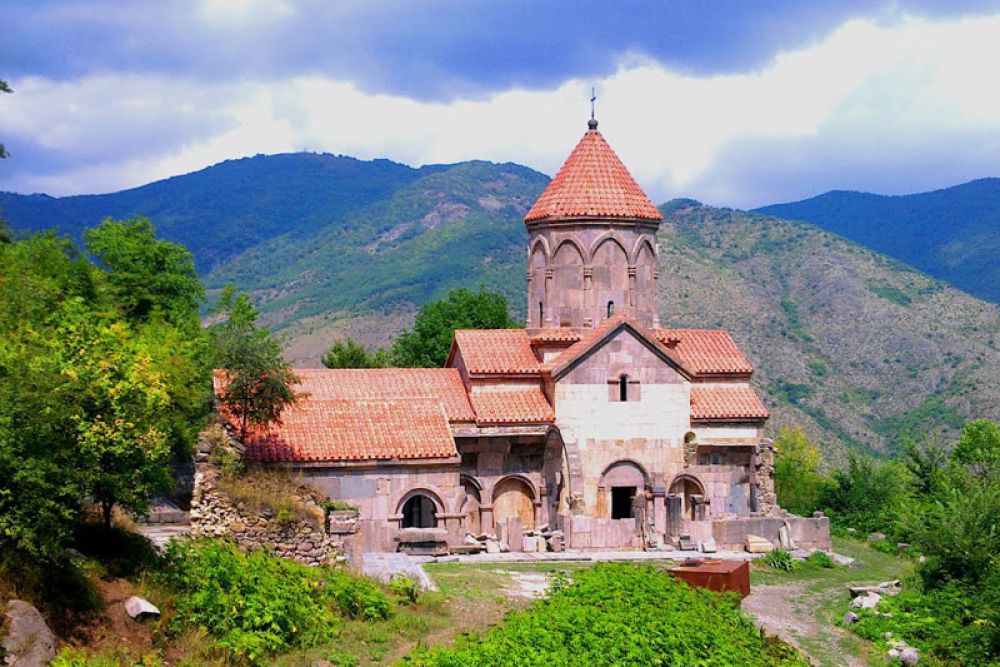

The Vahanavank Monastery situated near Kapan in the Syunik Province of Armenia carries a rich cultural and religious history dating back to the 10th century, with its establishment traditionally ascribed to Prince Vahan of Syunik. While specific documentation on the food history of Vahanavank is scarce, it’s well-known that Armenian monastic life has always been intimately connected with the land and nature, with monasteries often being self-sufficient in producing food.
Monks would grow their own crops, harvest fruits, and make their own wine. The cuisine, therefore, was predominantly vegetarian, lined with grains, vegetables, and fruits that were grown in the area. During religious fasting periods, the diet was strictly vegetarian (vegan), which influenced the development of a rich array of vegetarian dishes in Armenian cuisine. Feasts on special occasions would also include fish, brought from the nearby rivers.
Ghapama (Vegetarian) - This traditional stuffed pumpkin dish often signifies celebration and is filled with rice, dried fruits, and nuts.
Dolma (Non-vegetarian) - While there are many varieties, look for the vegetarian option of these grape leaves stuffed with spiced rice and sometimes lentils.
Lavash (Vegetarian) - A traditional thin bread that is a staple in Armenian cuisine and perfect to pair with almost any dish.
Zhingyalov hats (Vegetarian) - A flatbread stuffed with finely diced herbs and green vegetables, typical for the region of Syunik.
Basturma (Non-vegetarian) - Although traditionally made from beef, there can be variations with other types of meat; however, this air-dried cured meat is a flavorful delicacy.
Gata (Vegetarian) - An Armenian pastry or sweet bread, often filled with a spiced sugar mixture or made plain to enjoy with tea or coffee.
Harissa (Non-vegetarian) - A porridge made from wheat and meat, usually chicken or fish alternatives in the region near Vahanavank.
Eech (Vegetarian) - A bulgur salad that's similar to tabbouleh, made with finely chopped tomatoes, parsley, and red pepper paste.
Madzoon (Vegetarian) - Armenian yogurt that can be used in a variety of dishes or enjoyed on its own, especially as a cooling side.
Ttu lavash (Vegetarian) - A thin stringy sourdough left to dry in the sun and often used later to make khashil with hot water and garlic.
Address: Kapan, Syunik Province, Armenia
Famous Food: Zhingyalov hats (Vegetarian), a dish embodying the flavors of the region with its variety of fresh herbs.
Address: Shahumyan St, Kpan, Armenia
Famous Food: Armenian coffee (Vegetarian) served traditionally, and a perfect end to any meal.
Address: Davit Bek st., Kapan 3301, Armenia
Famous Food: Harissa (Non-vegetarian), with chicken substituted with fish for Lenten adherents and those avoiding meat.
Please note that traditional Armenian cuisine commonly includes meat and fish, but there is an extensive range of delicious vegetarian dishes as well. It is advisable for tourists to verify the ingredients with the restaurant to ensure their dietary preferences and restrictions are accommodated.